This video offers step by step instruction on how to mount our hand-crafted, sisal scratch poles. Jake, the creator of the vertical space components shows you how easy it can be to give your cats the gift of height! To learn more about why vertical space is so important and for design ideas visit
https://www.fundamentallyfeline.com/products-services/vertical-space/
Sisal scratching posts
A BIG screened porch gets some “catification”
Another blank slate in need of catification. This was a multi-cat household with a lot of vertical potential. We only catified a portion of the screen porch but the kitties loved it and it met this families needs nicely. Have a look...



You do not need to do much to make it more appealing for your cats. A perch for bird and squirrel viewing, a pole to scratch, height for added security and comfort equals a happy cat!


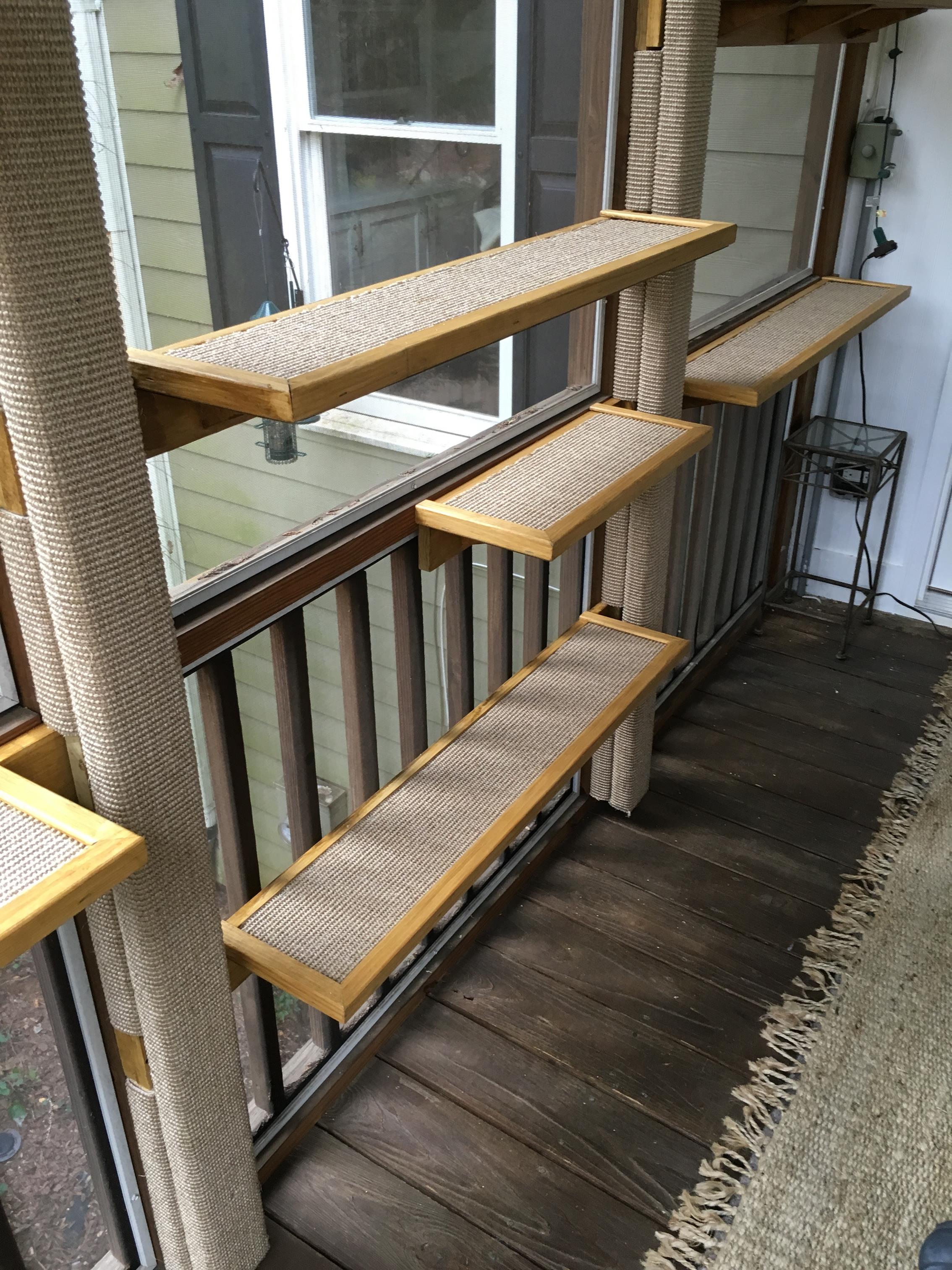

All of our pieces are hand-crafted locally here in Atlanta, Georgia. We are mindful of spacing to ensure cats of all ages and abilities are able to access each level.
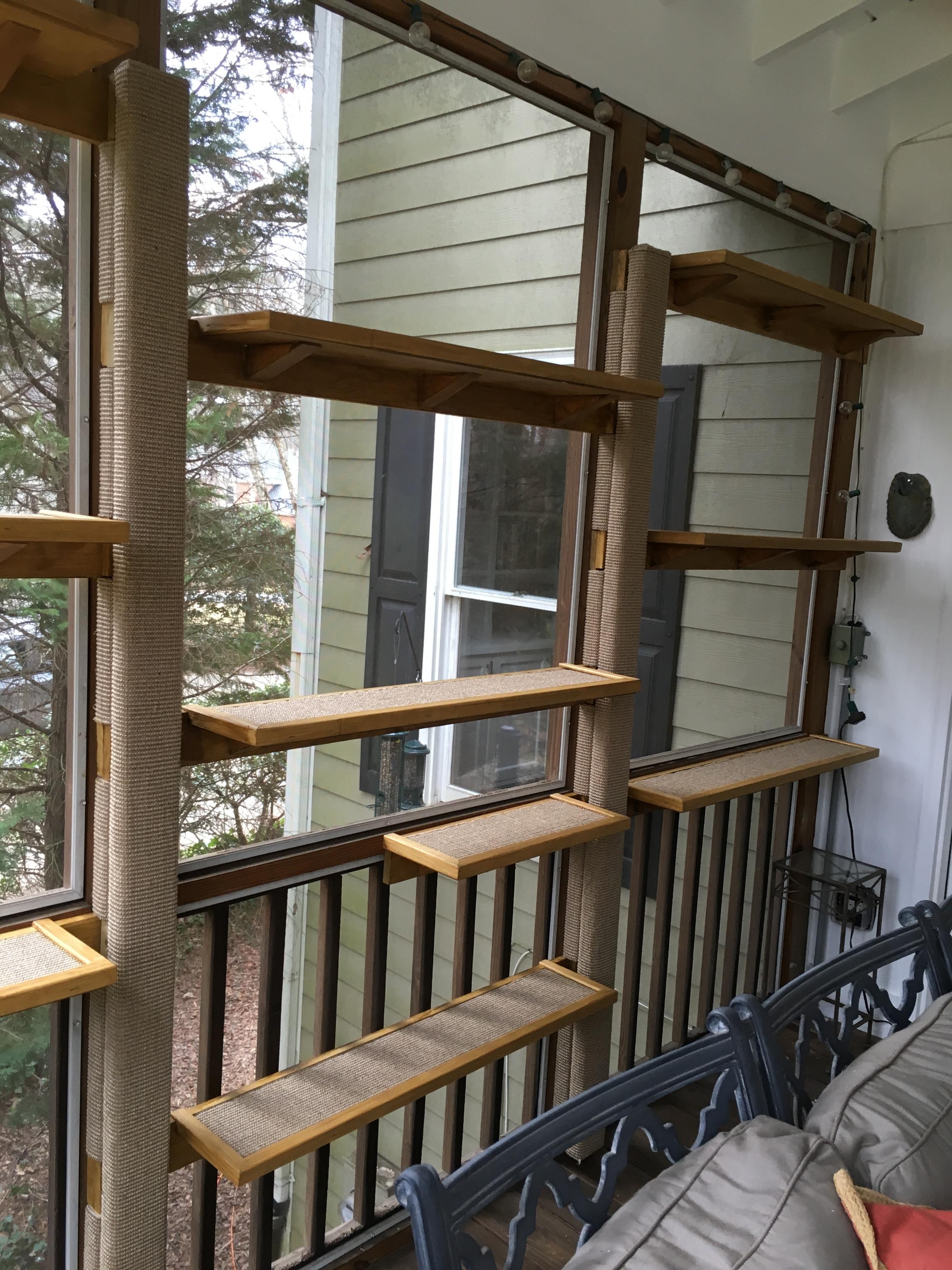
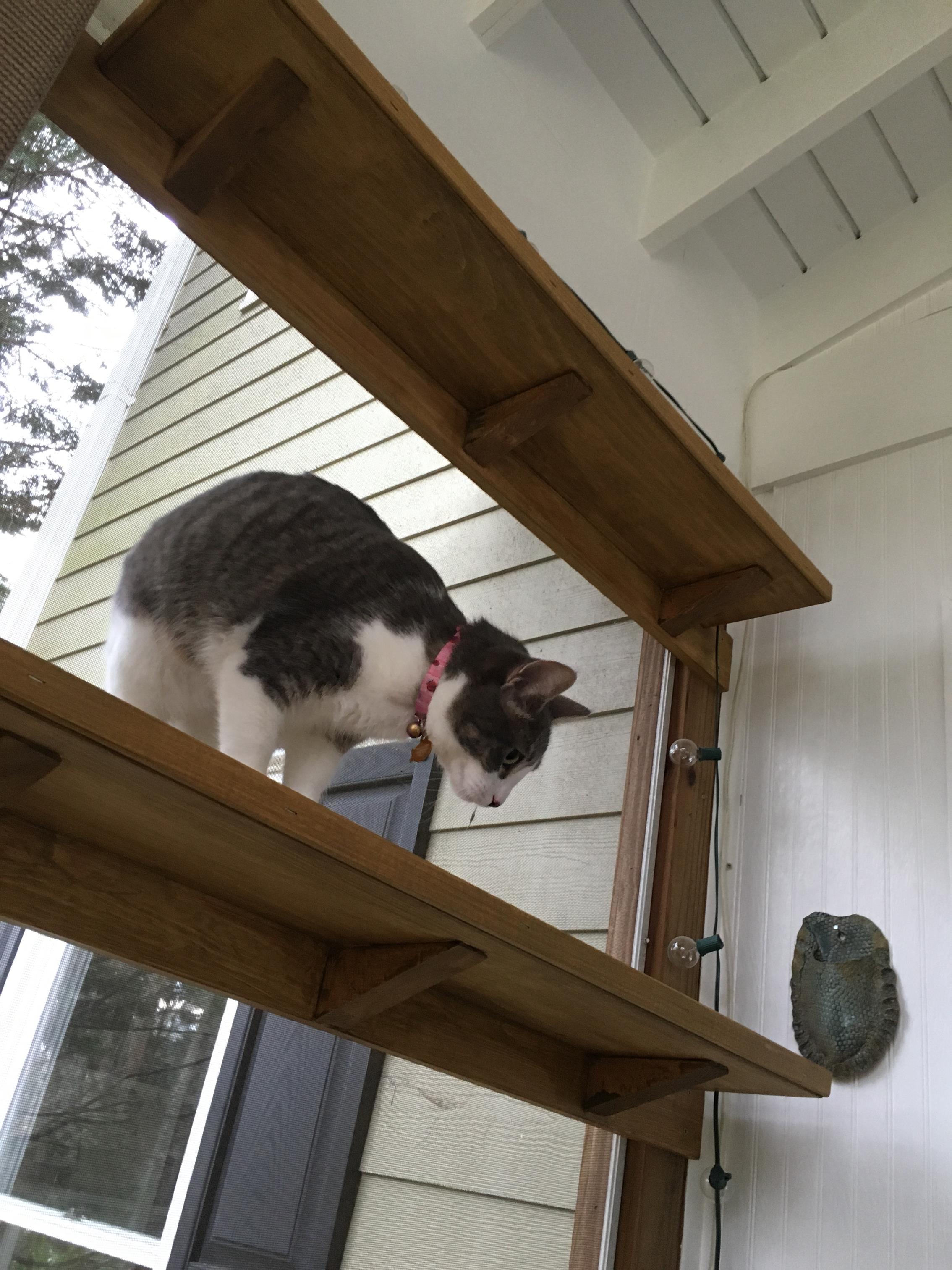
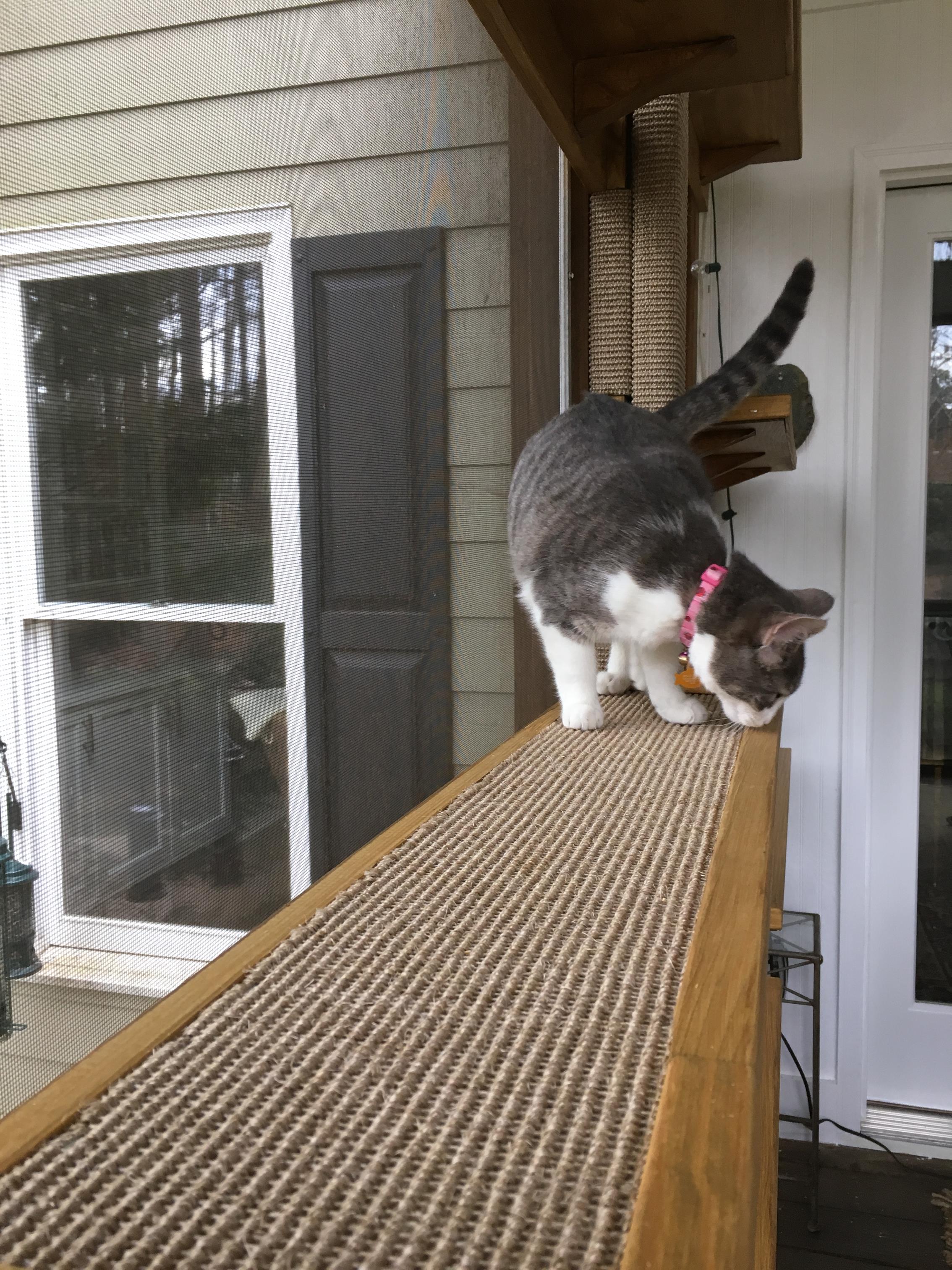
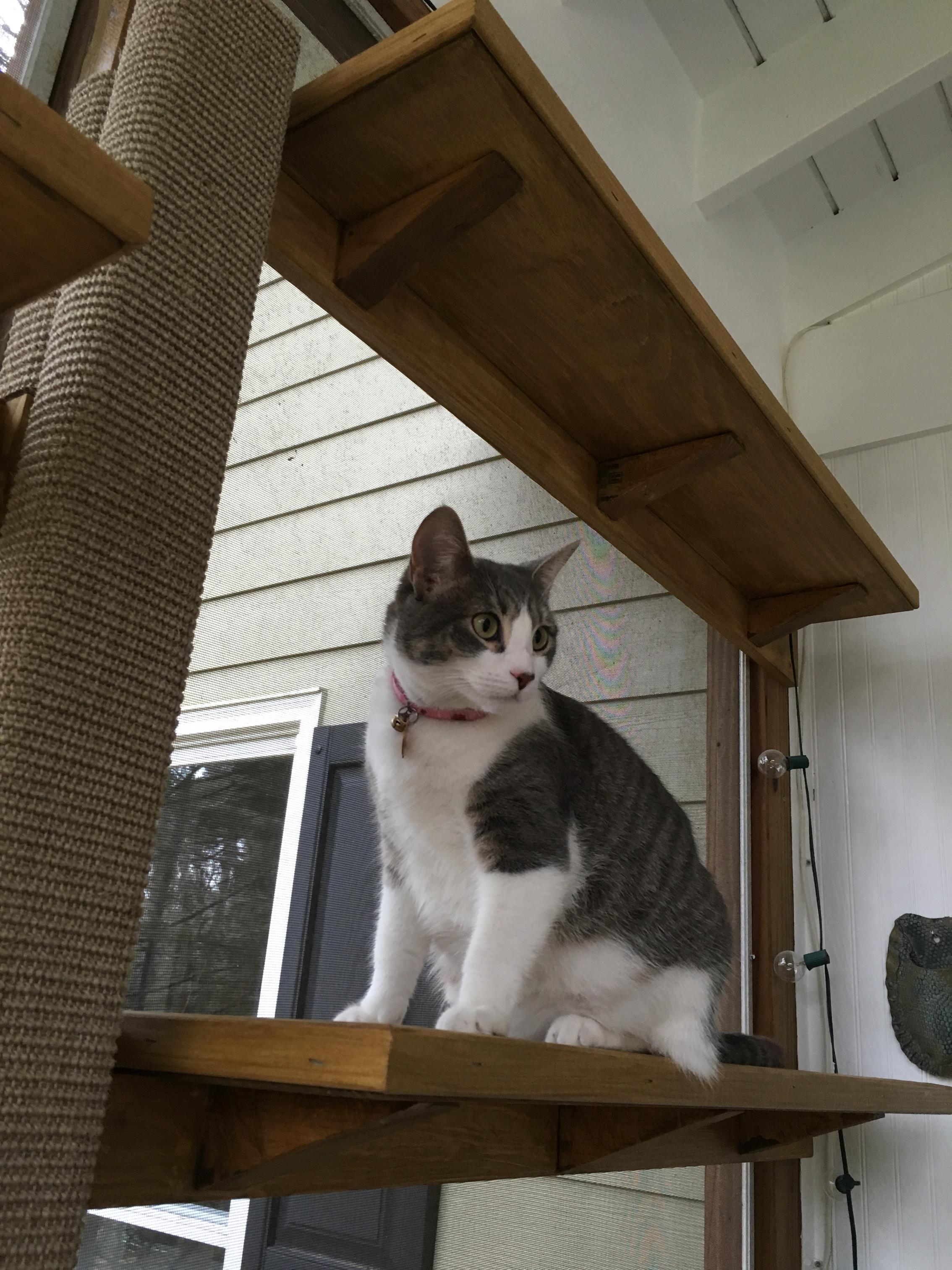
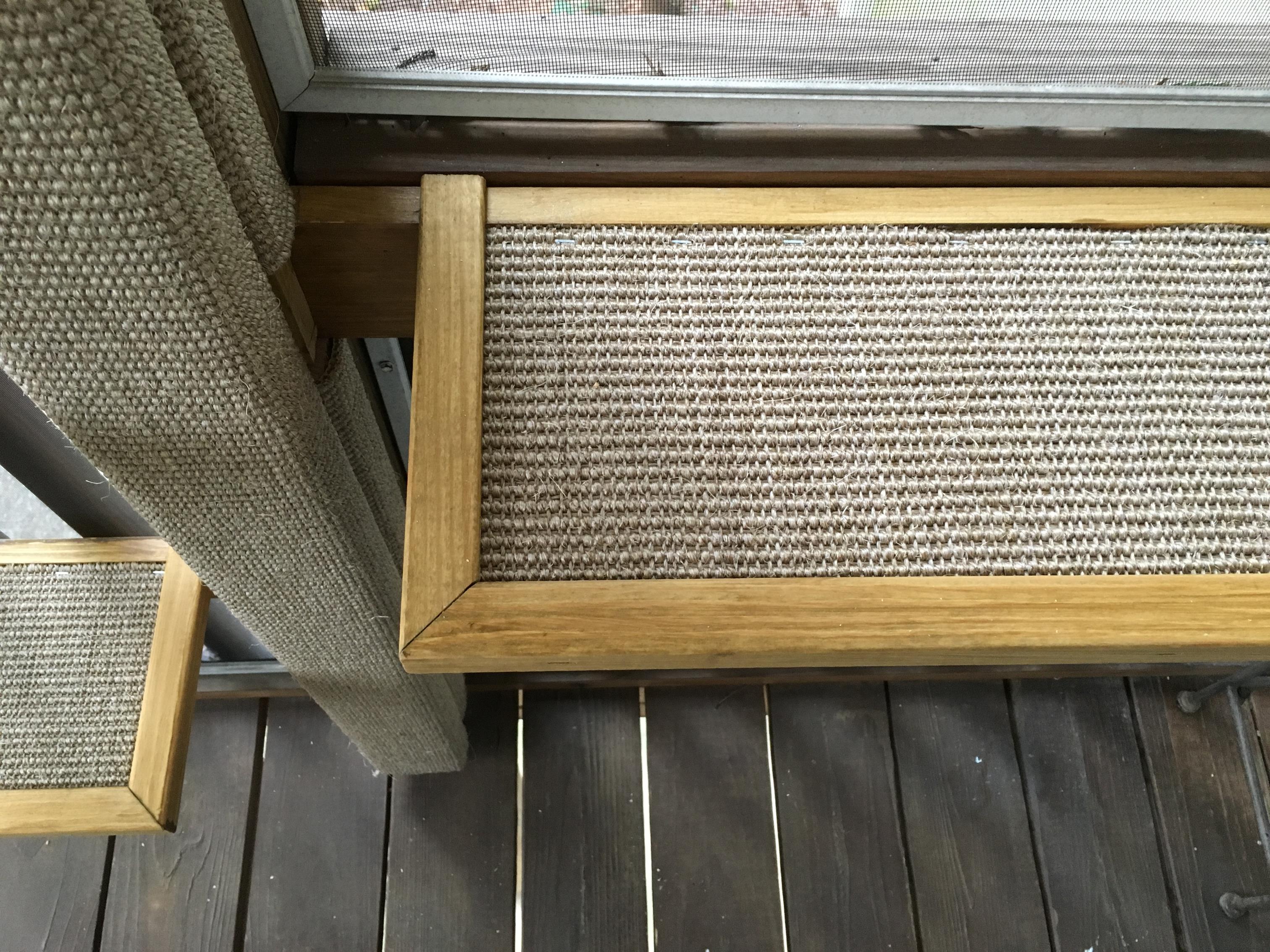


Feline Scratching Behaviors
Scratching is a normal feline behavior; even declawed cats need to scratch! To avoid accidents and to keep your furniture safe, you need to understand why your cat scratches and what she needs to fill her scratching requirements.
Why do cats scratch?
There are many reasons why a cat scratches, including:
- Marking: cats have scent glands in the pads of their feet and they scratch to leave scent marks. They often do this to mark the belongings you share, such as the sofa.
- Shedding the outer sheaths of the nail: a cat’s nails grow in layers (like an onion) and they need to scratch to shed the outer nail sheath, or the nail could continue to grow into the foot pad.
- Relieving stress or frustration: some cats may increase their marking (such as scratching and urine marking) when they are anxious.
- Stretching: watch how your cat s-t-r-e-t-c-h-e-s as she scratches to flex her spine.
- Exuberance: sometimes your cat scratches just because it feels good!
Cats may also play or threaten with a swipe of their paws. Play swatting with other cats seldom leads to injuries; usually their claws are retracted during play, and cats are well protected by their thick skin and coat. When play does get a little rough, cats will usually sort out their differences, though sometimes it may escalate to inter-cat aggression that can lead to injuries that require veterinary attention.
With a basic understanding of cat behavior and a little bit of effort, it is possible to prevent or avoid scratching problems.
How can I stop my cat from scratching?
The short answer is: you can’t. It is impractical and unfair to expect cats to stop scratching entirely. Cats that go outside may to do much of their scratching outdoors, but they will still need to scratch while indoors. Indoor cats require outlets for their scratching and marking behaviors.
Your goal should not be stopping the scratching behavior, but to focus it to appropriate items and areas. Building, designing or buying a scratching post or cat condos, providing appropriate play toys, and keeping the cat away from potential problem areas will usually deal with most scratching problems.
Think about why the cat is doing what she’s doing. For example, owners may feel frustrated when their kittens begin to climb furniture. Remember that kittens can’t leap the way adult cats do, so they use their needle-sharp claws to climb. This is not intentionally destructive, and you can prevent it by providing an option. For example, if your kitten climbs the bedding to get up on your bed, place a scratching post beside the bed or low stool so she can take two short leaps instead of climbing. The same is true as your cat gets older and her stiff joints keep her from jumping as she used to. A post placed immediately beside the sofa or armchair that is being climbed serves the same purpose.
How can I design scratching areas for my cat?
You have to address
1) where your cat needs to scratch
2) what your cat needs to scratch
Where?
Your cat wants to mark your belongings (and in effect, mark you) as part of her territory, so place scratching pads and posts in areas where you spend a lot of your time. *Cats scratch mark in high traffic areas where you and they pass through each day* Cats mark with urine and feces around the perimeter of their space. Scratching posts should be placed in prominent areas.
Cats also like to scratch and stretch after waking from a nap, so place a post or cat tree close to the cat’s favorite napping spots. Don’t expect the cat to walk across the house or down the stairs to use a scratching post when there’s a perfectly good chair right across the room!
What?
Most pet store scratching posts are simply inadequate: too short, too unsteady, covered with the wrong material… You will save money in the long run by investing in a quality scratching post rather than buying two or three (or more) posts that aren’t suitable.
A vertical post should be at least 30 inches high: tall enough for the cat to scratch while standing on her hind legs with the forelegs extended. It must be sturdy, with a wide base, so that it does not wobble or topple over easily.
Stability plays a big role in determining whether a cat will use a particular scratcher. For example, the scratchers made to hang over a doorknob are unstable; consequently many cats won’t use them. You can instead take that scratcher, cut off the hanging loop, and lay it on the floor for use as a horizontal scratcher (more about those below). After all trees, deck railings, sofas do not sway or move, this is one reason they are so appealing.
The post covering is important! Store-bought scratching posts are usually covered with carpet pieces which won’t help your cat remove the outer nail sheaths. You can’t expect the cat to know the difference between the carpet on the post (OK to scratch) and the carpet on the floor (off-limits). The best covering is sisal fabric; the next-best option is tightly wound sisal rope. Carpet-covered perches can be an acceptable option as a cozy bed, but not for scratching.
Remember that scratching is also a marking behavior and cats want to leave a visual mark. Her tattered scratching post may not look good to you, but to your cat, it’s perfect. Don’t rush to replace or re-cover it!
Some cats prefer a horizontal or slanted surface rather than a post. If you don’t provide an appealing scratching option, then the back of your sofa may look awfully inviting! Consider getting a sisal-covered scratching pad or corrugated cardboard scratcher, which can lie flat on the floor. For a slanted option try a sisal scratch ramp or corrugated cardboard ramp.
Some cats prefer to scratch on a piece of bare wood. Many cat trees offer wood or sisal-covered surfaces for scratching.
How can I get my cat to use the post?
First, remember what we said about location! Your cat wants to mark in areas of the home that you both use often, not in the spare bedroom or the dark dusty basement. You may need to start by placing the post in a prominent area (such as the corner of the sofa) until she begins using the post. Then you can slowly (very slowly, over days or weeks!) inch the post toward a less obtrusive location.
Make the post and the surrounding area a fun and interesting place for your cat. Provide things that appeal to cats, such as perches to climb on, hideaways to snuggle in to, and toys dangling from ropes or attached to springs. Place a few play toys, treats, or even the food bowl in the area to help to keep the cat occupied. Place a toy or treat on top of the post; she’ll find that reward when she climbs the post. Entice her to chase a toy or laser light that you run up the post.
You can rub catnip on the post, or spray it with catnip tea. (Place some catnip in a small container with water and heat it in the microwave for a minute; then rub the catnip infused water all over the post.)
Give your cat a food reward when you see her use the post. You can rake your fingernails along the post to make scratching noises. You may try to show the cat what you want by taking her to the post and gently rubbing her paws on it in a scratching manner, but do not try this with a fearful or anxious cat.
Unless you live in a very small space, you probably need to provide multiple scratching posts in various areas of your home. If you have multiple cats, you definitely need multiple posts!
What can I do if the cat continues to scratch my furniture?
Remember that your cat is clearly showing you where she needs to mark! It’s your job to find a way to meet her needs and your own. This may take a little time, effort, and strategy!
If the cat continues to use one or two pieces of furniture, consider placing a scratching post directly in front of the furniture that is being scratched, or placing a cat condo near the area. Take a good look at the surfaces of the scratched furniture; since the cat clearly likes that material, make sure that her scratching post is covered with an even more preferred texture. Simultaneously, make the piece of furniture unappealing using Sticky Paws (double sided sticky tape made for this very purpose), double sided carpet tape from a home improvement store, or even a citrus scented spray (cats do not like citrus scents). See below for more details on deterring undesirable scratching.
It may help to place additional scratching posts or cat condos in appropriate areas. Be sure to keep the cat’s claws trimmed!
Feliway is a synthetic product that mimics feline facial pheromones and aids in curbing destructive scratching. (It’s also used to treat aggression and inappropriate elimination.) It is available in a spray or as an electric diffuser; to deter destructive scratching, we find the spray to be more effective for scratching purposes. Apply it daily to the area that you do not want the cat to scratch. The spray dissipates over a 24-hour period, just as natural scent marking does, which is why you need to reapply daily. We’d be happy to discuss use of this product with you.
How do I punish my cat for inappropriate scratching?
Don’t punish your cat for doing what is most natural to her! Punishment will just make her fearful of you, and can lead the cat to scratch when you aren’t around to see her.
The idea is to train the cat not to scratch certain surfaces and areas, even in your absence. Help the cat learn to use the post by making other surfaces less desirable. For example, if your cat likes to scratch on the end of the sofa, cover it with a material that she doesn’t like to scratch, such as plastic, aluminum foil, or double-sided tape.
Cayenne pepper can be an effective deterrent; it’s harmless, but can cause sneezing. It is easy to apply and clean up. Citrus-based scents or ginger can deter some cats.
You may consider indirect, non-physical punishment if you can remain out of sight. That allows your cat to learn that inappropriate scratching brings unpleasant results, even when you aren’t there. You can booby-trap problem areas so that scratching (or even approaching) the area is unpleasant for the cat. For example, use a motion detector with an audible alarm, or stack a few plastic cups that will topple if your cat scratches in the wrong place.
Clicker training can be a very effective tool for training your cat to scratch in the right places. In fact, scratching on a post is one of the easiest behaviors to train! Reward use of the post and ignore any interest in the furniture. Soon your cat will be scratching the post just to receive praise and treats from you!
Of course, no deterrent will work unless you provide the cat with an alternative scratching area that is appealing and well placed.
Resources
- The sisal-weave posts, scratching pads and ramps available through this website work better than any other post that we have seen. They are designed to meet your cat’s needs for a tall, sturdy scratching post, and are meticulously hand-crafted.
- Keeping your cat’s nails trimmed will minimize damage done if your cat occasionally strays from the post.
- As a last resort, there is a product called Soft Paws. They are plastic caps you put on the tips of a cat’s nails using a non-toxic adhesive. Most clients find it unnecessary. Soft Paws are a temporary fix because they will not change the cat’s behavior; they just temporarily curb the destruction.
Here is a helpful video illustrating all of the above points!
How Does Your Scratching Post Measure Up?
The bottom line
There are many reasons why cats scratch. By being considerate of her needs and conscious of your decisions, you can provide her with appealing and appropriate places that meet her need to scratch, and she’ll leave your furniture alone.
There is never a need to declaw a cat to eliminate undesirable scratching behavior!
Please visit www.pawproject.org to learn more.






